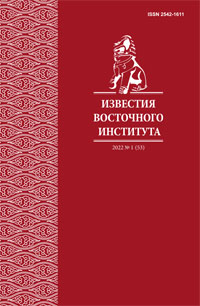Cadres Decide Everything: Reform of Cadre System in China in late 1980s – early 1990s
DOI:
https://doi.org/10.24866/2542-1611/2022-1/58-69Keywords:
China, cadre system, reform, perestroika, civil service, partocracyAbstract
The article is dedicated to the analysis of the cadre system reform in China in late 1980s – early 1990s that was implemented as a part of wider ‘reforms and opening up’ policy. The cadre system reform (first of all, Provisional Regulations on State Civil Servants, 1993) managed to improve recruiting, indoctrination and functions of Chinese bureaucracy. The reform brought start to the practices of enrolment exams, rotation of leadership and hierarchy system of administrative ranks. All these measures became one of key factors of maintaining and strengthening of China’s partocracy regime in 1990s, which contrasted with crisis in international communism movement and collapse of the Soviet Union and its Communist Party. The success of these measures conducted in the framework of the experimental reform led to adopting Civil Servants Law in 2005, which was fully based on previous Provisional Regulations on State Civil Servants.




